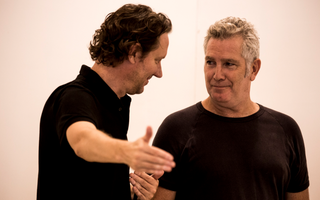 On Stage
On Stage
- The character of Hamlet has the most lines of any character in all of Shakespeare’s plays. Hamlet
is also Shakespeare’s longest play.
- William Shakespeare was an actor, not just a playwright, and it is thought that he played the Ghost of old Hamlet in the original production of this play.
- There are two authoritative published versions of Hamlet – the Second Quarto (published during Shakespeare’s lifetime) and the version printed in the posthumous First Folio. Each contains passages that do not appear in the other. If you did a production of Hamlet that included all of the lines from both versions, the play would run at over four hours.
- The first version of Hamlet ever printed was a famously unauthorised, pirated version now known as the First Quarto, or ‘Bad Quarto.’ Theorists believe it may have been written by an actor in the cast who did not quite remember all the lines correctly. Notably, the most famous line in the play (“To be, or not to be, that is the question...”) is written in the Bad Quarto as “To be, or not to be, ay, there’s the point.”
- Hamlet is filled with phrases that have been adapted and adopted into our modern vernacular, so much so that many think of them as cliches. Phrases that have been lifted from Hamlet include “cruel to be kind”, “method in the madness”, “murder most foul” and “neither a borrower nor a lender be”.
- While Disney have never publicly admitted any direct correlation, The Lion King is widely believed to be a loose adaptation of Hamlet. Featuring a plotline where an uncle murders his brother to take the throne, the deceased father appearing in ghost form to his son, an outcast prince who returns to gain eventual revenge on his uncle, and two bumbling sidekick friends, there are definite similarities between the two works.
- Hamlet’s relationship with his mother, Gertrude, was a source of inspiration to Sigmund Freud in his development of the Oedipus Complex theory.
- Tom Stoppard’s 1966 play Rosencrantz and Guildenstern are Dead tells the fictional unknown story of these largely offstage characters, with Hamlet and other major characters from the play appearing only fleetingly.
- When André Tchaíkowsky, a Polish composer and pianist, died in 1982, he stated that his skull “be offered by the institution receiving my body to the Royal Shakespeare Company for use in theatrical performance.” For many years the skull was only used in rehearsals. The first actor to use Tchaíkowsky’s skull on stage was David Tennant in his performance as Hamlet in 2008 for the RSC.
- The play is so well-known that it has appeared throughout popular culture, from The Simpsons to a parody in Arnold Schwarzenegger’s The Last Action Hero.











